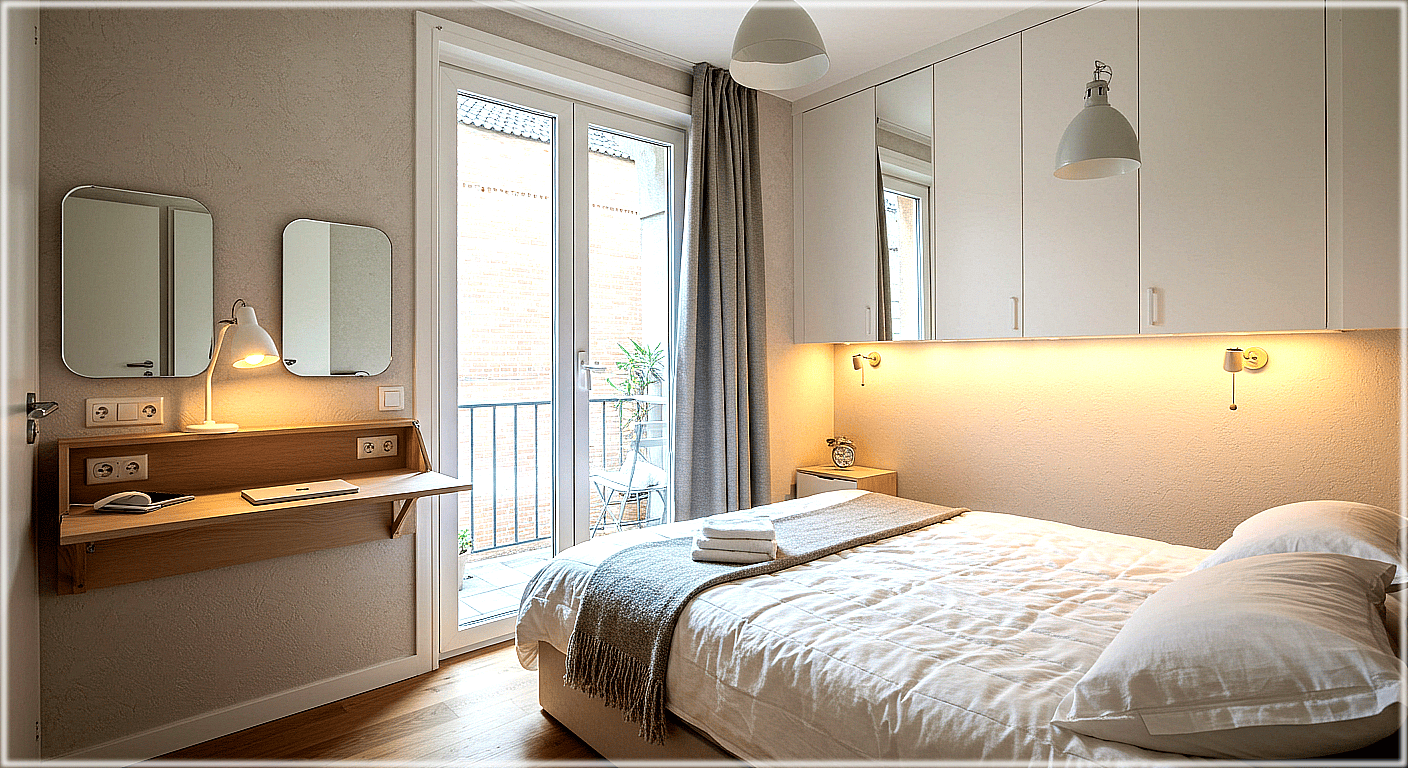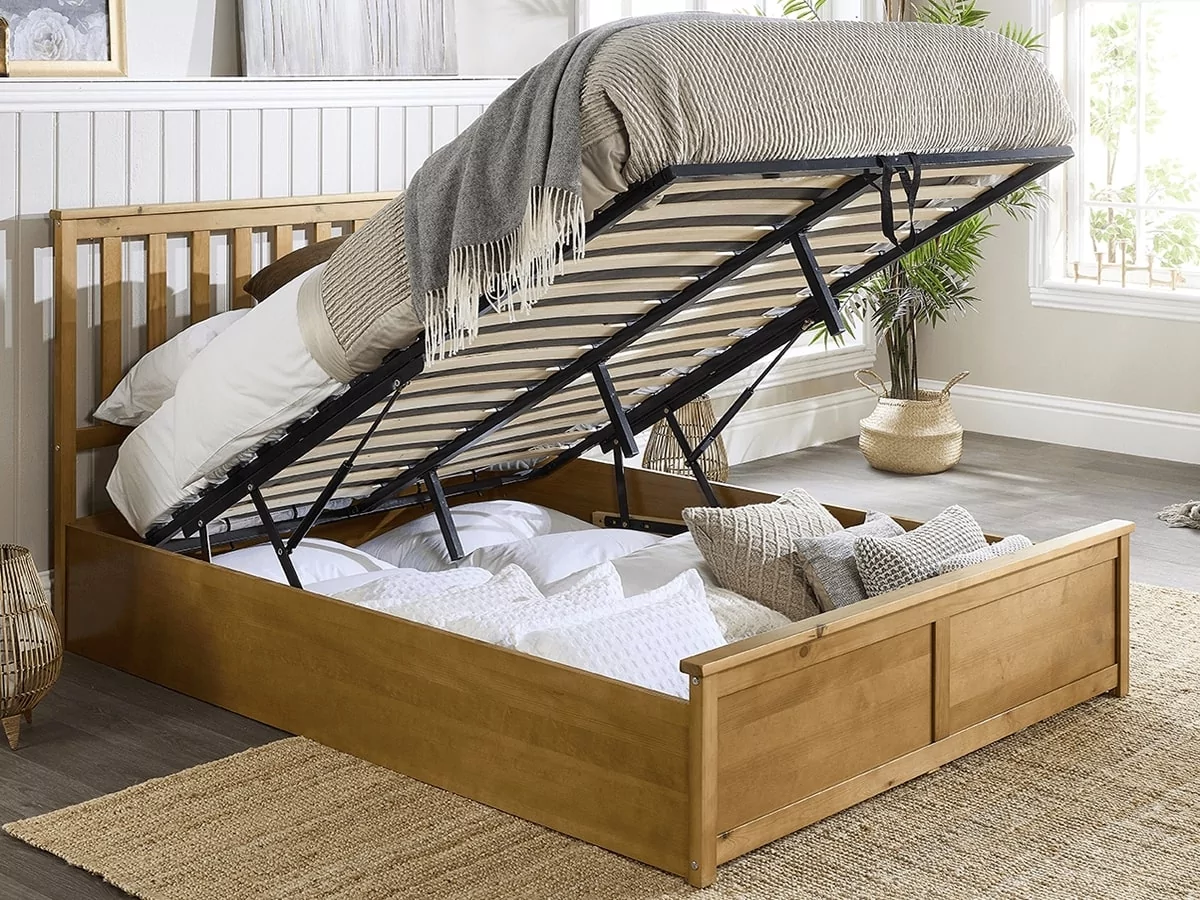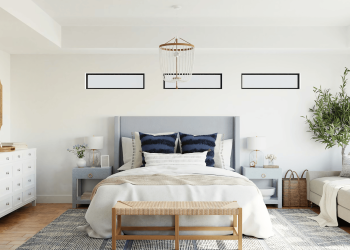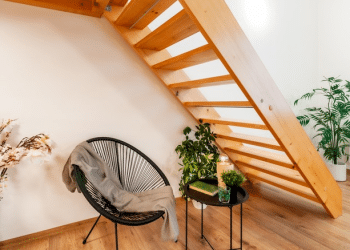Table of Contents

When it comes to designing a small bedroom, maximising floor space will undoubtedly be your biggest priority. However, in your eagerness to make things work, you might inadvertently commit cardinal design sins that any professional interior designer would spot straightaway. These mistakes can make your cosy bedroom feel cramped and uncomfortable, defeating the very purpose of creating a relaxing sanctuary.
This comprehensive article will explore the top five small bedroom design mistakes to avoid, helping you create a bedroom that’s not just small, but wonderfully functional and aesthetically pleasing. By understanding and steering clear of these common pitfalls, you’ll be well on your way to designing a space that feels both spacious and inviting.
1. Overestimating Bed Size
Perhaps the most significant bedroom design mistake is overestimating bed size, which unnecessarily consumes precious floor space and makes a bedroom feel uncomfortably cramped. The last thing you want is a bedroom you can barely move around in because your bed dominates the entire space! This common error can transform what could be a cosy retreat into a claustrophobic nightmare.
While everyone naturally aspires to have a double bed (at minimum), smaller bedrooms will be much better served by a small double bed. Small doubles are cleverly designed to be narrower than standard doubles whilst maintaining the same length (4 x 6.3″ vs. 6.6 x 6.3″), providing you with valuable additional floor space without significantly compromising on comfort. This smart compromise allows you to maintain the luxury of a spacious bed whilst ensuring your room remains functional.
If you find that a standard double bed occupies most of your available floor space, switching to a small double will give you that much-needed breathing room. Similarly, if you’re considering upgrading from a double to a king-size bed, carefully evaluate whether your room can comfortably accommodate the larger dimensions without feeling overcrowded.
2. Bad Use of Storage
Storage Solutions Are Crucial for Making Your Bedroom Liveable, as You’ll Need Designated Places to Store Your Belongings to Maintain a Tidy, Organised Space. However, It’s Essential Not to Go Overboard with Storage Solutions, as Too Much Visible Storage Can Actually Make spaces Feel More Confined and Cluttered than They Really Are.
Here Are Some Clever, Space-Optimising Storage Ideas to Consider:
Remember, sometimes the best storage solution is simply to declutter – don’t be afraid to sort through your belongings and part with items you no longer need or use!
3. Neglecting Scale
It’s essential to choose furniture and furnishings that work well together in terms of scale. By scale, we mean ensuring that furniture pieces are proportionate to one another, creating a harmonious blend rather than a jarring mismatch. For instance, your bedside table shouldn’t tower over your bed height, as this creates an awkward visual imbalance.
A common mistake people make when designing smaller bedrooms is selecting numerous smaller pieces of furniture to fill a compact space. Counterintuitively, one larger, well-chosen piece often works better because it reduces visual clutter and creates a sense of openness and flow.
When planning your bedroom layout, use your bed as the primary anchor point and thoughtfully incorporate smaller pieces of furniture to build a natural sense of rhythm and flow throughout the space. The key is to maintain proportional harmony – you don’t want any single piece of furniture to appear significantly larger or smaller than the others (with the obvious exception of your bed).
4. Skimping on Good Lighting
When designing small bedrooms, people often make the mistake of relying solely on basic overhead lighting, assuming that if a ceiling light adequately illuminates the room, there’s no need for additional lighting solutions. This oversimplified approach to lighting can make your bedroom feel flat and uninviting, despite the ceiling light providing sufficient illumination.
Good lighting is an absolute game-changer for small bedrooms, as it has the remarkable ability to completely transform spaces. You can harness the power of lighting to create inviting cosy nooks, comfortable reading areas, draw attention to stunning architectural features, and even set different moods using dimmer switches or colour-changing smart bulbs.
Let me share some brilliant lighting ideas that can revolutionise your small bedroom:
It’s worth noting that warm lighting is significantly better than cool lighting in bedrooms. This isn’t just about aesthetics – cool lighting contains blue light wavelengths that can interfere with your natural sleep patterns, whilst warm lighting promotes relaxation and restful sleep.
5. Not Taking Colours Seriously
The Colours You Choose Play a Crucial role in Establishing the Ambience of Your Bedroom. Both Warm and Cool Colours Work Together to Create Specific Moods Within a Room and Set the Foundation for Your Overall Design Theme.
When Approaching Colour Schemes, I’d Recommend Starting with a Clean White Base for Your Walls and Building from There. Here’s a Golden Rule to Remember: the More Compact Your Bedroom, the Lighter Your Colour Palette Should Be. if You’re Keen to Incorporate Bold, Bright Colours, Consider Creating an Eye-Catching Feature Wall Rather than Overwhelming the Space by Painting All Walls in the Same Vibrant Shade.
For Those Seeking a More Understated Look, Greys and Beiges Serve as Fantastic Neutral Options that Work Brilliantly in Small Bedrooms. Alternatively, if You’re After Something with a Bit More Personality, Pastel Shades Can Introduce a Touch of Sophistication and Class without Overpowering the Space.
It’s important to understand that colour psychology isn’t just a trendy concept – it’s backed by research and can significantly impact your mood and wellbeing. Your bedroom should feature colours that promote peace and relaxation. Whilst green, blue, and purple are traditionally associated with calming properties, the most important factor is choosing colours that personally help you feel serene and relaxed. After all, your bedroom should be your ultimate sanctuary for rest and rejuvenation.








